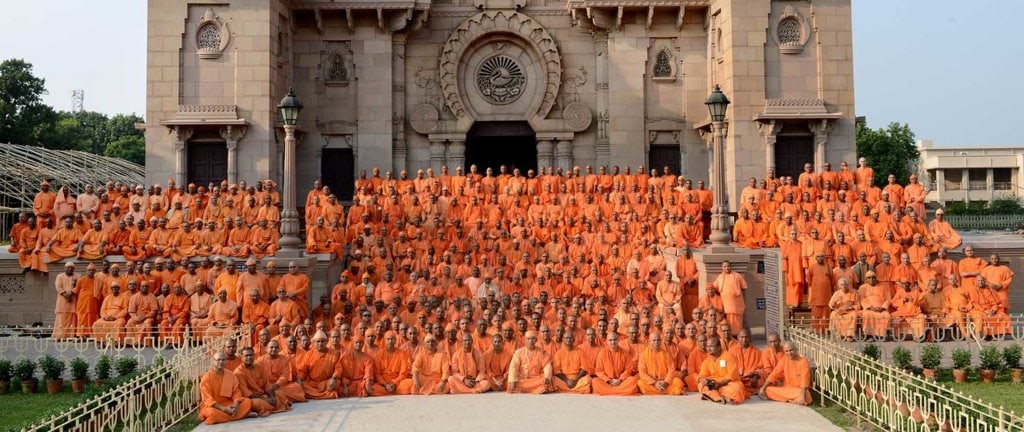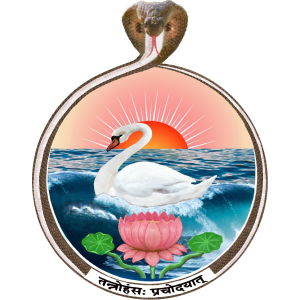The Ramakrishna Order

The Ramakrishna Order, with headquarters in Kolkata (Belur Math), is one of the largest and most respected religious orders in India today. The Order was inspired by the great Bengali saint, Sri Ramakrishna (1836-1886). Shortly before his death, Sri Ramakrishna encouraged his young disciples to formally renounce the world by giving them the ochre cloth of renunciation. He entrusted the care of these young men to his foremost disciple, Swami Vivekananda (1863-1902), who later, in 1897, founded the Ramakrishna Order.
The Ramakrishna Order does not believe in conversion, nor does it indulge in the occult or the sensational. The Order places utmost importance on personal spiritual unfoldment and selfless service. Inspired by the idea of the harmony of religions, its centres encourage adherents of different faiths to meet in a spirit of friendship and mutual appreciation, and to learn from one another without having to give up one’s own faith. In the words of Sri Ramakrishna:
“God has made different religions to suit different aspirants, lives and countries … all doctrines are only so many paths; but a path is by no means God Himself. Indeed one can reach God if one follows any of the paths with whole-hearted devotion.”
On the Indian subcontinent, the Ramakrishna Mission has been in the forefront of philanthropic activities. Its first social service efforts – inspired by Swami Vivekananda – began in 1897. Since that time, the Mission’s activities have continued to expand up to the present day.
In educational activities, the Ramakrishna Mission has consistently been ahead of its time. It has developed some of the most outstanding educational institutions in India, having its own colleges, vocational training centers, high schools and primary schools, teachers’ training institutes, as well as schools for the visually handicapped. It also has adult education centers through out the county. Whenever disaster has struck, the Ramakrishna Mission has been there to offer relief from famine, epidemic, fire, flood, earthquake, cyclone, and communal disturbances.
MOTTO: The motto of the Ramakrishna Mission and Ramakrishna Math is Ātmāno mokṣārthaṃ jagata hitāya ca, “For one’s own salvation and for the welfare of the world”. It was formulated by Swami Vivekananda.
IDEALS: Work as worship, potential divinity of the soul, and harmony of religions are three of the noteworthy ideals on which the Math and Mission. It is this ideal of service to man as service to God that sustains the large number of hospitals, dispensaries, mobile medical units, schools, colleges, rural development centres and many other social service institutions run by the Mission.

Belur Math located in Kolkata, India, is the spiritual heart and headquarters of our parent organisation Ramakrishna Math & Ramakrishna Mission.
There are 274 branch centers of the Ramakrishna Order, and many more unofficial, or unaffiliated ones. These centers not only cover the length and breadth of the Indian subcontinent, but can also be found in Europe, Russia, Japan, South America, Africa, Canada and the United States.
To find out more about Belur Math please visit: belurmath.org
Our Emblem

The emblem of the Ramakrishna Order designed by Swami Vivekananda is a unique and unparalleled work of art created by one of the richest minds in contemporary history in an exalted mood of spiritual inspiration. It is a profound symbol of harmony and synthesis for reverential meditation in this present age of conflict and disharmony. The meaning behind this emblem, in the language of Vivekananda himself:
“The wavy waters in the picture are symbolic of Karma, the lotus of Bhakti, and the rising-sun of Jnana. The encircling serpent is indicative of Yoga and awakened Kundalini Shakti, while the swan in the picture stands for Paramatman. Therefore, the ideal of the picture is that by the union of Karma, Jnana, Bhakti and Yoga, the vision of the Paramatman is obtained.”
The emblem depicts the four paths to God:
- The wavy waters – unselfish work.
- The lotus – love of God.
- The rising sun – knowledge.
- The encircling serpent – awakening of spiritual power.
तन्नो हंस: प्रचोदयात् (Tanno hamsah prachodayat), meaning, “May the Paramatman, Supreme Self [symbolized by] the Swan (hamsa), awaken our [higher] understanding.”
